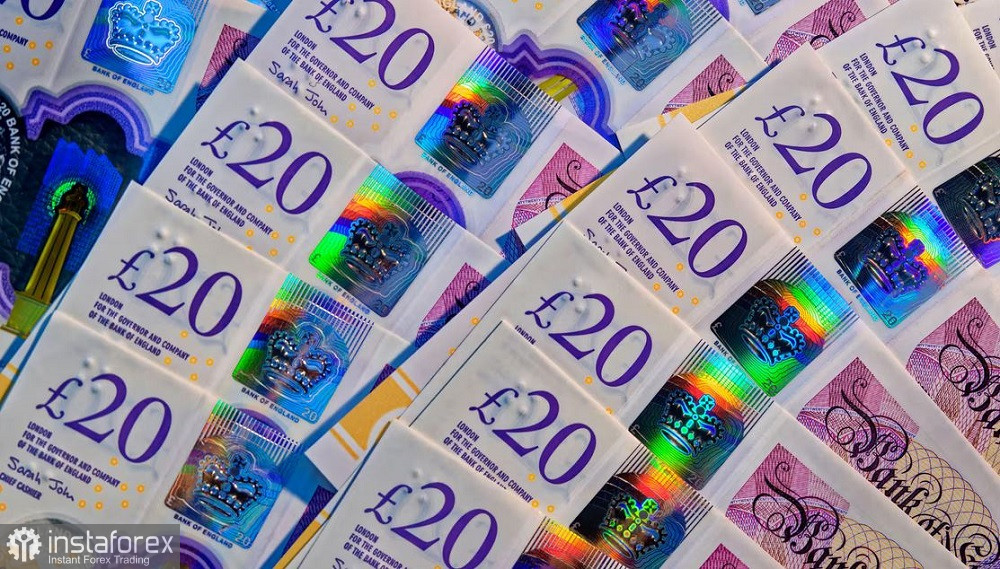The GBP/USD currency pair reacted positively to today's report on the UK labor market. All components of the report were in the "green zone," allowing GBP/USD buyers to organize a "mini-advance" to the upward borders. However, it is necessary to note that the current price increase should be approached skeptically, as it is only the first piece of the larger picture. Ahead are releases of inflation data in the USA as well as reports on inflation growth in the UK. At the end of the week, we will learn about the growth of the British economy and the volume of retail trade. It's a packed week. Therefore, today's release, so to speak, is a "warm-up" for upcoming events, although it does allow for certain conclusions.
According to the disclosed data, the unemployment rate in the UK sharply declined in December to 3.8% (the lowest since April 2023), compared to the previous value of 4.2%. Most experts predicted a more modest decrease to 4.0%. Another component of the report also entered the "green zone." The number of claims for unemployment benefits rose by 14,000 in January, although the forecast was 15,500. However, there is no reason for optimism here—the indicator has been rising for the second consecutive month. Nevertheless, the fact remains that these numbers are in the green.

A contradictory situation has also arisen with salaries. The growth rates continue to decline but slower than most experts expected. With bonus payments taken into account, the average wage level rose by 5.8% in December (forecast is 5.6%). This indicator has been consistently declining for the last five months (for comparison, in July last year, it was at 8.5%). The December result of 5.8% is the weakest growth rate since February 2023.
Excluding bonuses, the average wage level increased by 6.2% (forecast: 6.0%). Here, too, there is a downward trend for the fourth consecutive month. In July of last year, this indicator reached its peak (7.9%) and has since been slowly but steadily sliding down.
What does the report say?
Today's report de facto favored the British currency, as all its components entered the "green zone." But overall, the situation is not so rosy for the pound. The only undisputed plus of the release is the reduction of unemployment to 3.8%. However, this is a rather shaky macroeconomic indicator, while more timely indicators (jobless claims) reflect very alarming trends.
The "salary" indicator also paints a contradictory picture. On the one hand, it is consistently declining (both with and without bonuses). But on the other hand, the slowdown was not as strong as most experts expected. This suggests that the British labor market continues to experience inflationary pressure. This fact allows the English regulator to keep the interest rate at its current level.
Recall that Bank of England Governor Andrew Bailey stated after the last (January) meeting that he supports the idea of keeping the interest rate at the current level "for an extended period" - until there is confidence that inflation will decrease to the target two percent level. According to him, the duration of the restrictive interest rate "will be determined based on incoming data."
Today's reports indicate that the labor market is still "hot" despite signs of a slowdown, so the regulator will need more evidence of its cooling.
It is worth noting that the results of the March meeting of the Bank of England are predetermined in any case. Most experts are confident that the regulator will maintain all parameters of monetary policy unchanged. At stake are the prospects for May. The labor market report has reduced the likelihood of a rate hike in May, although the decisive factor here will be British inflation, the January value of which we will learn on Wednesday, February 14.
In other words, the pound received a slight boost today, but it's more of an "advance." Inflation will either confirm the strengthening of the British currency or refute it. If the consumer price index comes out tomorrow at least at the forecast level (not to mention the "green zone"), the prospects for May will be in serious doubt (an overall CPI increase to 4.1% YoY is expected, core CPI to 5.2% YoY). The pound, accordingly, will receive additional support.
From a technical standpoint, the GBP/USD pair on the daily chart is within the Kumo cloud, on the middle line of the Bollinger Bands indicator, and simultaneously on the Tenkan-sen and Kijun-sen lines. It is advisable to consider long positions only after the pair exits the cloud, meaning it surpasses the resistance level of 1.2690. In this case, the price will be between the middle and upper lines of the Bollinger Bands as well as above all the lines of the Ichimoku indicator, which will form a bullish "Parade of Lines" signal. The target for the upward movement is the 1.2780 level—the upper line of the Bollinger Bands on the D1 timeframe.
 English
English 
 Русский
Русский Bahasa Indonesia
Bahasa Indonesia Bahasa Malay
Bahasa Malay ไทย
ไทย Español
Español Deutsch
Deutsch Български
Български Français
Français Tiếng Việt
Tiếng Việt 中文
中文 বাংলা
বাংলা हिन्दी
हिन्दी Čeština
Čeština Українська
Українська Română
Română

